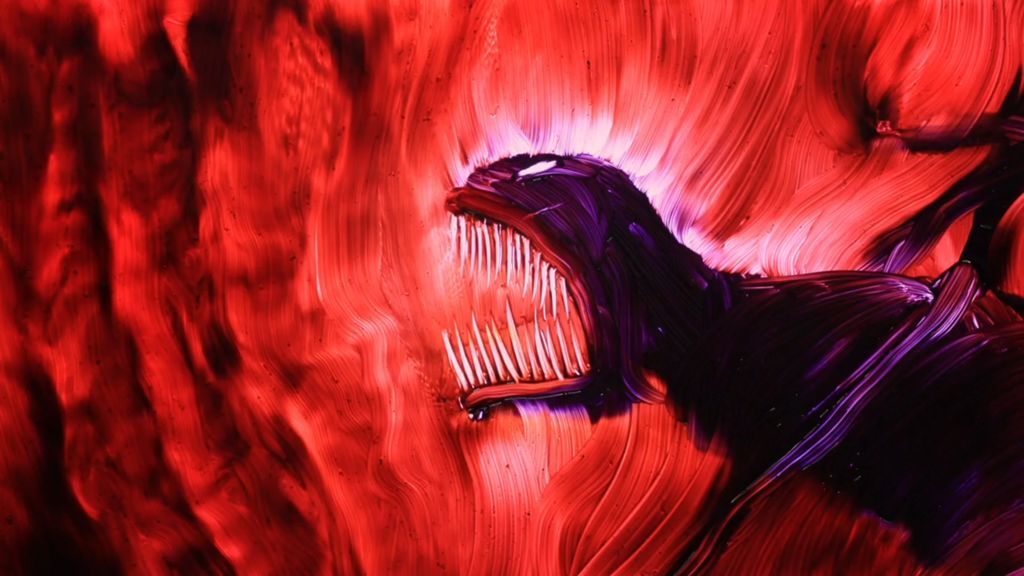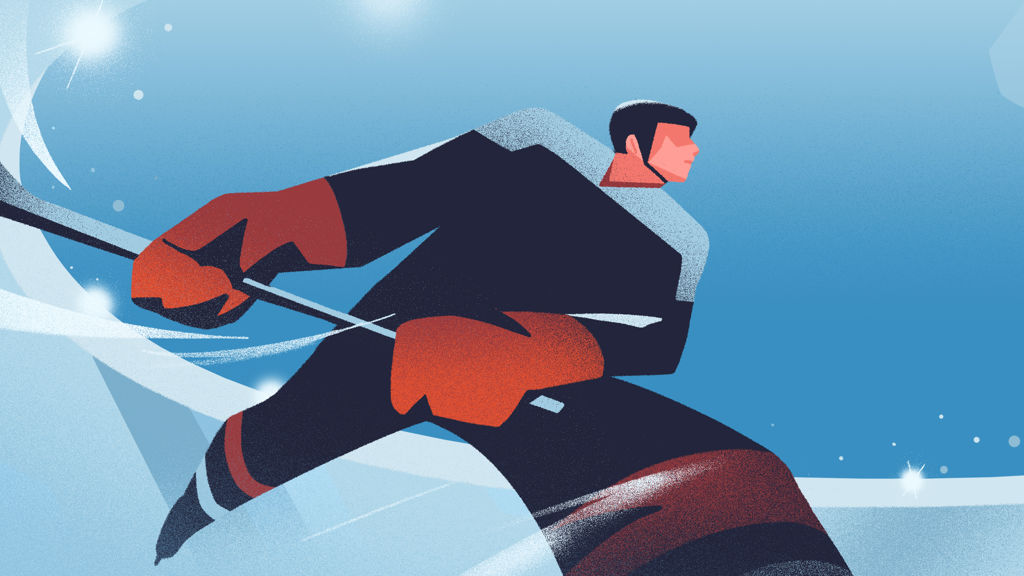Why animated advertising is worth the wait
Taraneh Golozar, Senior Producer at Where the Buffalo Roam, explains that, while some clients misunderstand the time it takes to create an animated piece of content, there are ways of speeding up the process, and it's always worth the wait.
As animation becomes one of the most in-demand areas in today's digital marketing world, the discussion around the format and the time it takes to create work using it is a popular topic.
An animated project can be a combination of multiple formats, as portrayed in Libresse's #wombstories [below], or perhaps a singular method, like the Apple piece, Intention. Clients who are new to animation are often surprised when they are presented with the production schedule, especially when some are under the impression that an animated video will take less time to produce than live-action content.
In an ideal world, the client would accept the timeline for the desired creative. However, in this rapid ad age, time is a rare commodity.
Depending on the total run time of the video, an animated production can take an extensive amount of time to complete. The execution period varies based on the style, with stop-motion animation being the most time-consuming, then cell and 3D animation, and ending with the least cumbersome method, motion graphics. In an ideal world, the client would accept the timeline for the desired creative. However, in this rapid ad age, time is a rare commodity and while there may be ways to cut down that time frame, aligning expectations is essential to completing a successful campaign.
Credits
powered by
- Agency AMV BBDO/London
- Production Company Chelsea
- Director Nisha Ganatra
-
-
Unlock full credits and more with a Source + shots membership.
Credits
powered by
- Agency AMV BBDO/London
- Production Company Chelsea
- Director Nisha Ganatra
- Creative Director Toby Allen
- Creative Director Jim Hilson
- Executive Creative Director Nicholas Hulley
- Executive Producer Nadja Lossgott
- Producer Edwina Dennison
- Production Service PSN Production Service Network
- Executive Producer Pat McGoldrick
- Executive Producer Lisa Mehling
- Producer Shanah Blevins
- Editing Company Trim
- Editor Elise Butt
- Sound Design 750mph
- Sound Engineer Sam Ashwell
- Post Production Company Framestore/London
- Creative Director Animation Sharon Lock
- Colorist Simon Bourne
- DP Natasha Braier
- Flame Artist Tim Greenwood
- Chief Creative Officer Alex Grieve

Credits
powered by
- Agency AMV BBDO/London
- Production Company Chelsea
- Director Nisha Ganatra
- Creative Director Toby Allen
- Creative Director Jim Hilson
- Executive Creative Director Nicholas Hulley
- Executive Producer Nadja Lossgott
- Producer Edwina Dennison
- Production Service PSN Production Service Network
- Executive Producer Pat McGoldrick
- Executive Producer Lisa Mehling
- Producer Shanah Blevins
- Editing Company Trim
- Editor Elise Butt
- Sound Design 750mph
- Sound Engineer Sam Ashwell
- Post Production Company Framestore/London
- Creative Director Animation Sharon Lock
- Colorist Simon Bourne
- DP Natasha Braier
- Flame Artist Tim Greenwood
- Chief Creative Officer Alex Grieve
Above: Libresse's #wombstories.
Constraints and compromises
The Quality Triangle is the best method to outline the constraints and compromises we face in the ad world, and more so when producing an animated video. This simple shape [below] illustrates the relationship between three primary forces of a project. In a normal situation, one of these factors is fixed and the other two will vary in inverse proportion to each other.
The campaign’s success lies within the hands of a great producer who can tackle the project’s needs daily. By smoothly manoeuvring between these three axis points, he/she determines the best trade-off between time, quality and resources. More often than not, producers face two fixed axis points from the triangle above; a set budget and a hard delivery deadline, which leaves them with one option: eliminating non-essential features.

Above: The 'Quality Triangle'.
A video we recently created for an investing app client is an example of a great creative partnership in which our team was introduced to the same challenges, in terms of budget and deadline, with an elaborate creative idea. We had roughly 10 days to script and produce a 90-second animated educational video.
Cutting features may seem drastic, but if done in a strategic way, it can be beneficial to a campaign’s success.
To avoid sacrificing the quality, we revisited the strategy by offering these solutions:
● Cutting down non-essential features
● Simplifying delivery specs
● Staggering the delivery
Cutting features may seem drastic, but if done in a strategic way, it can be beneficial to a campaign’s success. By doing this you are creating time to protect the brand identity through the lens of animation. The most important part is releasing the core messaging in the initial stage and, step-by-step, expanding the outreach by simply offering the additional features as a bonus. Ultimately, this approach helped the team to focus their energy on finalising an engaging 30-second animated video for the launch date, while buying time to execute the longer format.

Above: Award-winning creative director Ali Bati illustrated ad for a drawing course was repurposed as an ad-based meme.
Impact of animation on brand identity
Nothing is more encouraging and rewarding than the audience engaging with the content you create. But how can one expand on its growth? Two critical factors in growing a target audience are trust and credibility. In an ever-changing world of consumer needs, the biggest challenge for brands is not merely to stay relevant but to also keep their audience engaged long enough to establish a rapport.
An innovative method to win the consumer’s heart while earning their loyalty.
Today, a consumer’s attention span is shorter than ever. Therefore, an effective engagement strategy is to bring the audience into the world you have created for them. Don Draper said it best in an episode of Mad Men: “The greatest thing you got working for you is not the photo you take or the picture you paint. It’s the imagination of the consumer. They have no budget and no time limit; but if you can get into that space, your ad can run all day.”
Animation is our bridge to human imagination and, therefore, among the most powerful tools of consumer engagement. An innovative method to win the consumer’s heart while earning their loyalty. As seen in the Android Being Human Is docu-series, each episode had a bespoke animation style that allowed the true story to shine while also subtly highlighting the phone's product features.
This approach is a visual technique called animated brand storytelling, which appeals to both our inner child and our discerning adult. With its fun and creative way of conveying technical and complex ideas, animated brand storytelling has become a key ingredient in audience engagement strategy and a core part of brand identity.
Credits
powered by
- Agency Production Company In-House
- Production Company Where the Buffalo Roam
- Director Nico Carbonaro
-
-
Unlock full credits and more with a Source + shots membership.
Credits
powered by
- Agency Production Company In-House
- Production Company Where the Buffalo Roam
- Director Nico Carbonaro
- Animation Company Oddfellows
- Executive Creative Director Chris Kelly / (Motion Graphic Designer)
- Creative Director Fabian Molina
- Music/Sound Design Space Lute
- Audio Post/Sound Designer JR Narrows
- Audio Post Machine Sound/New York
- Composer JR Narrows
- Sound Designer JR Narrows
- Executive Producer Tim Pries
- Edit Company Where the Buffalo Roam
- Executive Producer Erica Kelly
- Illustration Oddfellows/Sydney
- Director Tuesday McGowan
- Producer Jennifer Szeto
- Story Producer Von Diaz
- Producer Elisheba Ittoop
- Producer Taraneh Golozar
- Editor James Boger
- Senior Producer Alek Rost
- Sound Designer T Terressa Tate
- Sound Design Assistant Amanda Fuentes
- Audio Producer Kyra Hendricks

Credits
powered by
- Agency Production Company In-House
- Production Company Where the Buffalo Roam
- Director Nico Carbonaro
- Animation Company Oddfellows
- Executive Creative Director Chris Kelly / (Motion Graphic Designer)
- Creative Director Fabian Molina
- Music/Sound Design Space Lute
- Audio Post/Sound Designer JR Narrows
- Audio Post Machine Sound/New York
- Composer JR Narrows
- Sound Designer JR Narrows
- Executive Producer Tim Pries
- Edit Company Where the Buffalo Roam
- Executive Producer Erica Kelly
- Illustration Oddfellows/Sydney
- Director Tuesday McGowan
- Producer Jennifer Szeto
- Story Producer Von Diaz
- Producer Elisheba Ittoop
- Producer Taraneh Golozar
- Editor James Boger
- Senior Producer Alek Rost
- Sound Designer T Terressa Tate
- Sound Design Assistant Amanda Fuentes
- Audio Producer Kyra Hendricks
Above: Android's animated docu-series, Being Human Is.
Transparency is key
Compared to a live-action production that requires locations, securing permits, insurance, actors, gear, and which is enslaved to availability, animated videos are an affordable method in the era of digital marketing, offering an innovative and timeless approach. As a result, animated brand storytelling is charging ahead in promoting brand awareness and increasing sales.
Setting the scope and educating the client from day one helps strengthen the client relationship.
That being said, with all its credibility, it’s imperative to be transparent on the appropriate time needed for animation. Setting the scope and educating the client from day one facilitates smoother execution, alleviates risks, protects the brand’s identity, and helps strengthen the client relationship in the process.
)













